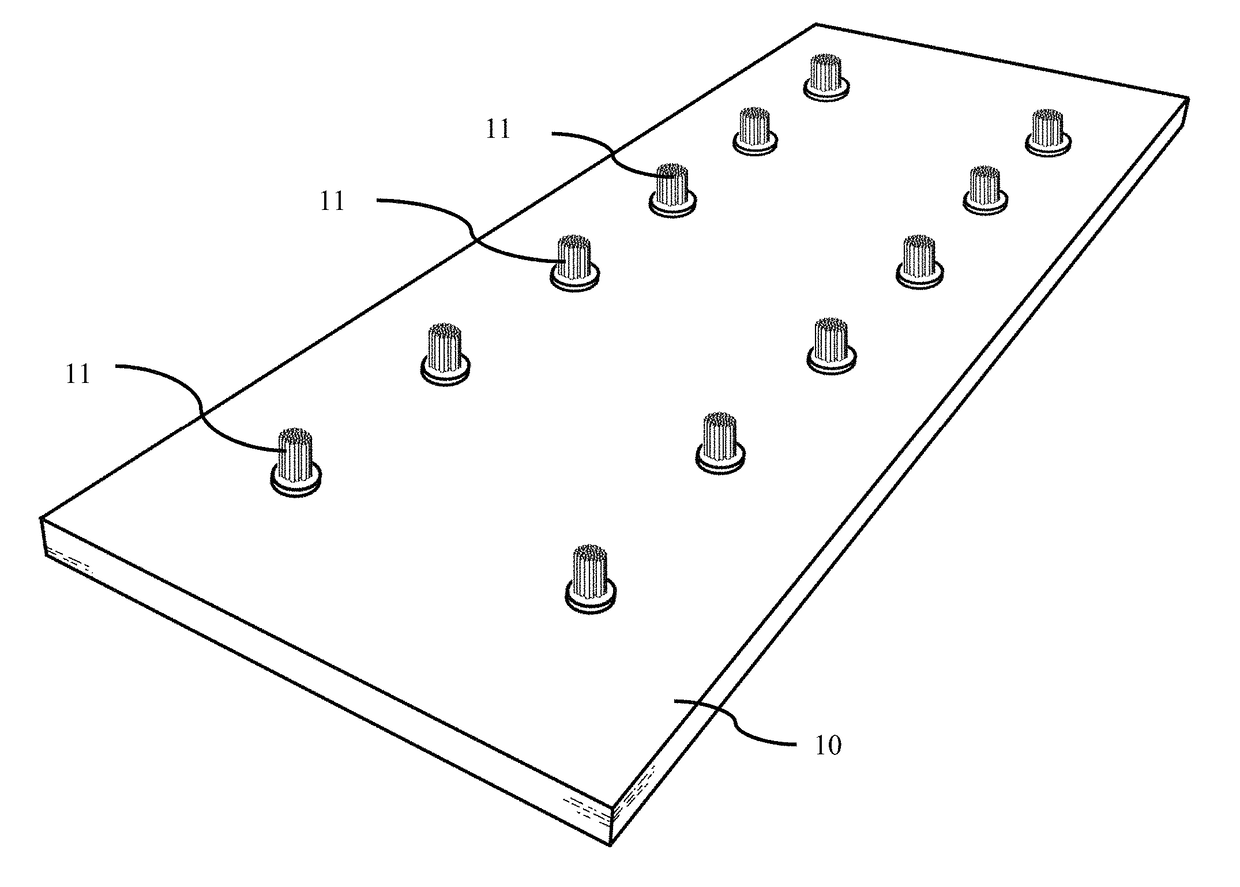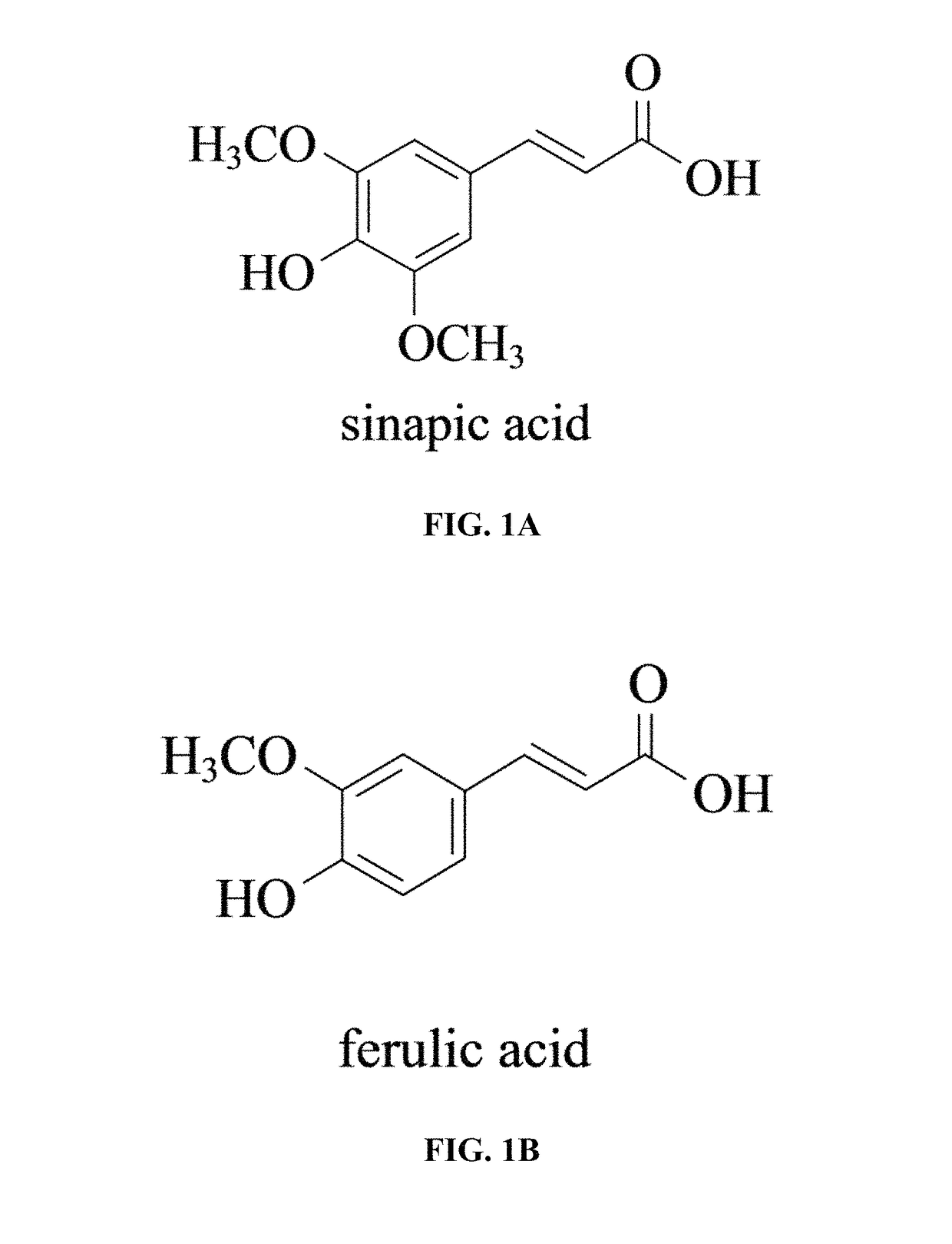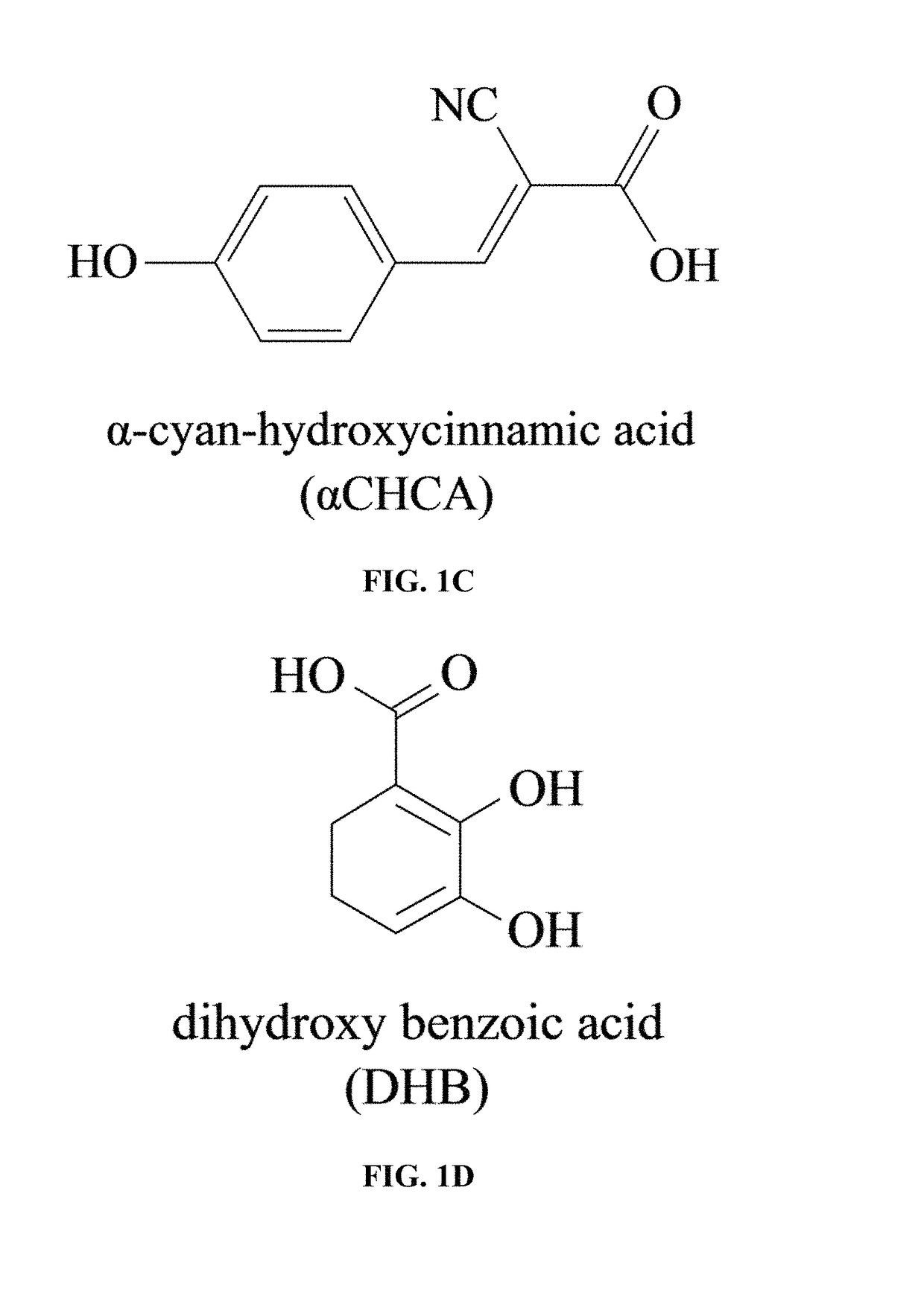Carbon nanotube anchor for mass spectrometer
a carbon nanotube and mass spectrometer technology, applied in the direction of instruments, coatings, particle separator tube details, etc., can solve the problem of limiting the total achievable sensitivity, and achieve the effect of preventing supersaturation of solution and reducing deposition on areas
- Summary
- Abstract
- Description
- Claims
- Application Information
AI Technical Summary
Benefits of technology
Problems solved by technology
Method used
Image
Examples
example 1
[0117]The Plasma-Enhanced Chemical Vapor Deposition (PECVD) growth was used to permit strict control of growth location and creation of well-defined areas of carbon nanotubes. Electron beam evaporation was used to deposit a nickel catalyst onto the substrate to create samples for carbon nanotube growth. Nickel pellets of 99.9% purity (Alfa Aesar, Ward Hill, Mass.) and placed in a new crucible liner (MDC Vacuum Products, Hayward, Calif.). The device used a 270° deflection of the electron beam source from the crucible, preventing the electron beam from being coated with target material, and concurrently permits beam focusing and beam shifting / scanning.
[0118]An advantage of chemical deposition, the deposited film is typically conformal to the sample surface, meaning a nearly uniform film thickness regardless of surface features, as seen in FIG. 2(A). A combination of three physical masks with rectangular grids of 1 mm diameter holes (with 3.3 mm grid spacing) were overlapped to form an...
example 2
[0128]A vital element of mass spectrometers, such as MALDI, are target support 10. Anchor spot 11 is developed on target support 10, and is designed to hold or maintain a target 20, seen in FIG. 8. Target support 10 may comprise or be coated with a hydrophobic material, as is known in the art.
[0129]Carbon nanotubes are extremely hydrophobic and have the capability of absorbing UV energy. These characteristics of carbon nanotubes enhance MALDI detection and enable matrixless biomolecular detection. The carbon nanotube material creates a surface for improved ionization or production of ion plume, at least in part from the hydrophobic nature of the carbon nanotube surface. After the growth of carbon nanotubes, the anchor spots become slightly roughened and provide large surface areas that promote the crystallization of analyte and matrix. Carbon nanotubes provide not only a hydrophobic anchor, but a large surface area with strong absorption at 334 nm.
[0130]Carbon nanotubes grow on a la...
example 3
[0135]Matrix α-cyano-4-hydroxycinnamic acid (αCHCA; Sigma-Aldrich, St. Louis, Mo.), high-purity acetonitrile (Burdick and Jackson, Morristown, N.J.), and peptide standard mix (Mariner CALMIX 4700; Applied Biosystems, Foster City, Calif.—hereinafter Peptide Mixture 1) consisting of des-Arginine1-Bradykinin (m / z 904), Angiotensin I (m / z 1297), Glu1-Fibrinopeptide B (m / z1569), and Adrenocorticotropic Hormone (ACTH) (1-17 clip) (m / z 2092)) were obtained. Information on the peptides is shown in Table 2. Water used was obtained from a Milli-Q water purification system (Millipore, Milford, Mass.) with a resistivity of 1.8×108 ohm per centimeter (MegΩ-cm) indicating highly purified water. Cleaning solvents such as acetone, isopropyl alcohol, and methanol were purchased from J.T. Baker (a division of Mallinckrodt Chemicals, Phillipsburg, N.J.).
[0136]
TABLE 2 Amino acid sequences for each respective peptide contained in Peptide Mixture 1. The amino acids in bold indicate the presence of a car...
PUM
| Property | Measurement | Unit |
|---|---|---|
| diameter | aaaaa | aaaaa |
| length | aaaaa | aaaaa |
| width | aaaaa | aaaaa |
Abstract
Description
Claims
Application Information
 Login to View More
Login to View More - R&D
- Intellectual Property
- Life Sciences
- Materials
- Tech Scout
- Unparalleled Data Quality
- Higher Quality Content
- 60% Fewer Hallucinations
Browse by: Latest US Patents, China's latest patents, Technical Efficacy Thesaurus, Application Domain, Technology Topic, Popular Technical Reports.
© 2025 PatSnap. All rights reserved.Legal|Privacy policy|Modern Slavery Act Transparency Statement|Sitemap|About US| Contact US: help@patsnap.com



